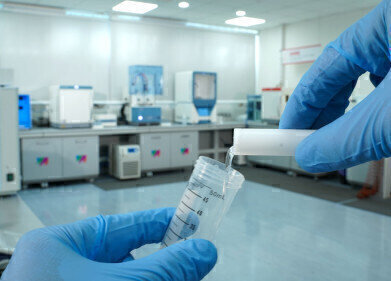Laboratory Products
New ISO 21392 method: a turning point in heavy metals analysis of cosmetics
Sep 06 2022
In effect since August 2021, the new ISO 21392:2021 is titled “Cosmetics — Analytical methods — Measurement of traces of heavy metals in cosmetic finished products using ICP/MS technique”. This document defines a universal method to determine the most common trace elements such as chromium, cobalt, arsenic, nickel, cadmium, antimony, and lead.
What was the situation before?
Before its implementation, the only existing document supporting this type of analysis was the technical report ISO / TR 17276: 2014 (“Analytical approach for screening and quantification methods for heavy metals in cosmetics”). This was an interesting overview containing general guidelines about the multiple analytical approaches available for heavy metal determinations, but it was lacking in accurate operational details and method performance data. Therefore, the feasibility and the application of this method was totally under control of the laboratories.
Consequently, the uniformity of method was not assured, and results obtained by different labs could not be compared.
The principles of the new ISO 21392:2021 method
The new ISO 21392:2021 method does not actually replace the aforementioned ISO / TR 17276: 2014, but it integrates its contents relating to the ICP-MS analytical technique.
At the same time, this new standard can be defined as “self-supporting”. What does self-supporting mean? Any knowledge or any use of other standards is not required at all, because all analytical procedures are specified directly in this ISO method and no consultation of other standards is required for its correct application. This greatly simplifies its adoption in analytical laboratories.
The main strengths of the method described are:
1. The simultaneous and selective determination of all the cited metals is allowed.
2. The appointed detection technique is mass spectrometry because of its high sensitivity: it allows determination of metal traces down to 20 μg / kg (0.02 ppm) or even lower with a standard configuration.
What are the principles of the method?
Samples need to be digested prior analysis, under very high temperature and pressure conditions, typically by processing them in a microwave digestion system.
The method involves the acid mineralization of an aliquot of sample, with an oxidizing
mixture composed of concentrated nitric acid + hydrochloric acid, under pressure and at about 200° C, using a microwave digestion system, followed by dilution and analytical determination with inductively coupled plasma - mass spectrometry (ICPMS).
Instrument calibration is performed using a series of defined calibration standards. Instrument stability is ensured and matrix effects are corrected by using internal standards (rhodium and lutetium).
It is possible that some cosmetic inorganic ingredients, such as silica or titanium dioxide, are not completely digested under the conditions of this document and that heavy metal confined in such ingredients are not fully extracted. However, the level of heavy metals trapped in these inorganic materials is not significantly contributing to the exposure level of consumers to these heavy metals. The use of lCP-MS ensures reliable measurement of trace levels of heavy metals due to its proven high sensitivity and selectivity.
Follow this link to view the complete white paper.
Follow this link to watch the webinar.
Digital Edition
ILM 49.5 July
July 2024
Chromatography Articles - Understanding PFAS: Analysis and Implications Mass Spectrometry & Spectroscopy Articles - MS detection of Alzheimer’s blood-based biomarkers LIMS - Essent...
View all digital editions
Events
Jul 28 2024 San Diego, CA USA
Jul 30 2024 Jakarta, Indonesia
Jul 31 2024 Chengdu, China
ACS National Meeting - Fall 2024
Aug 18 2024 Denver, CO, USA
Aug 25 2024 Copenhagen, Denmark



-(1)-(1).jpg)


24_06.jpg)













